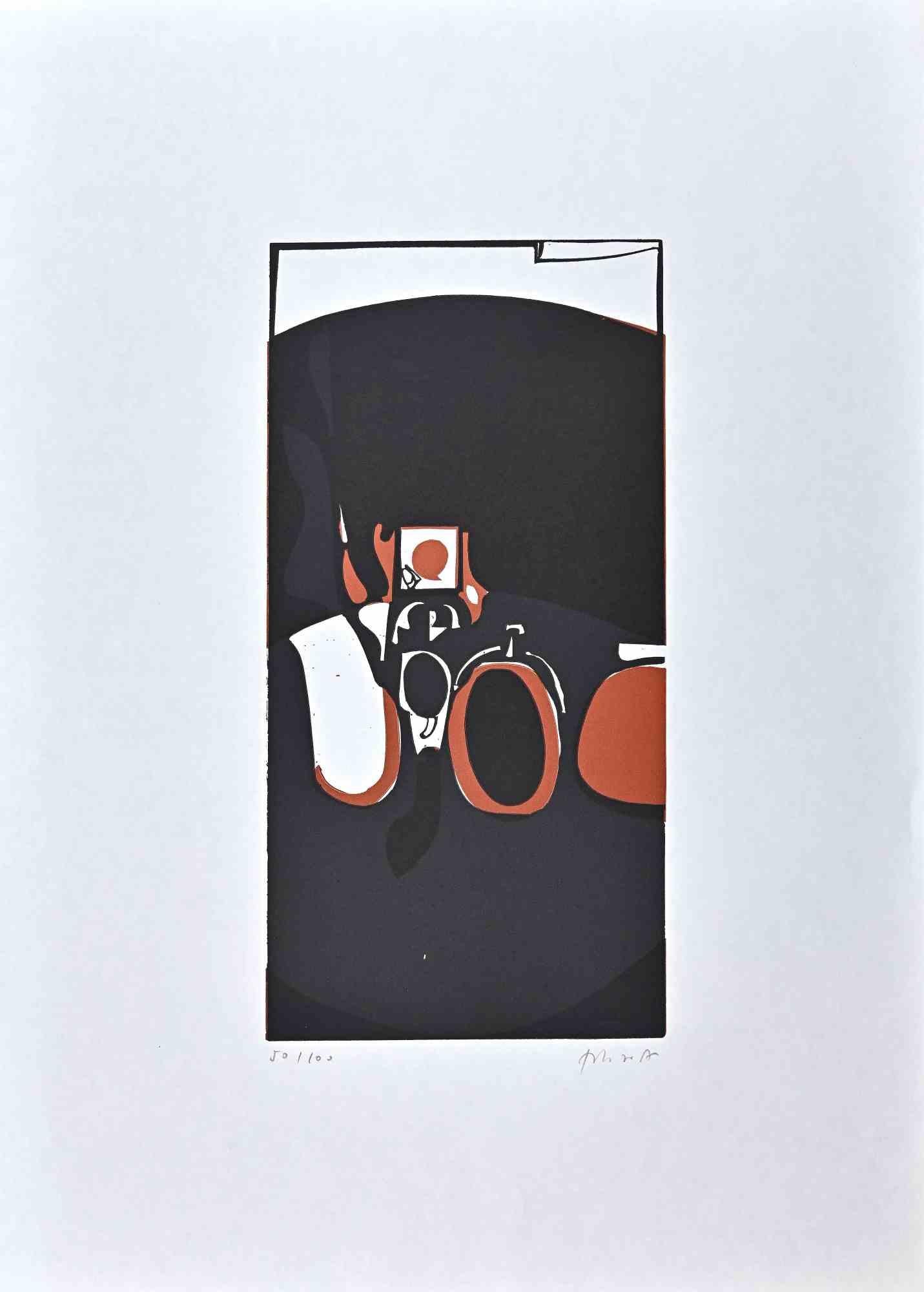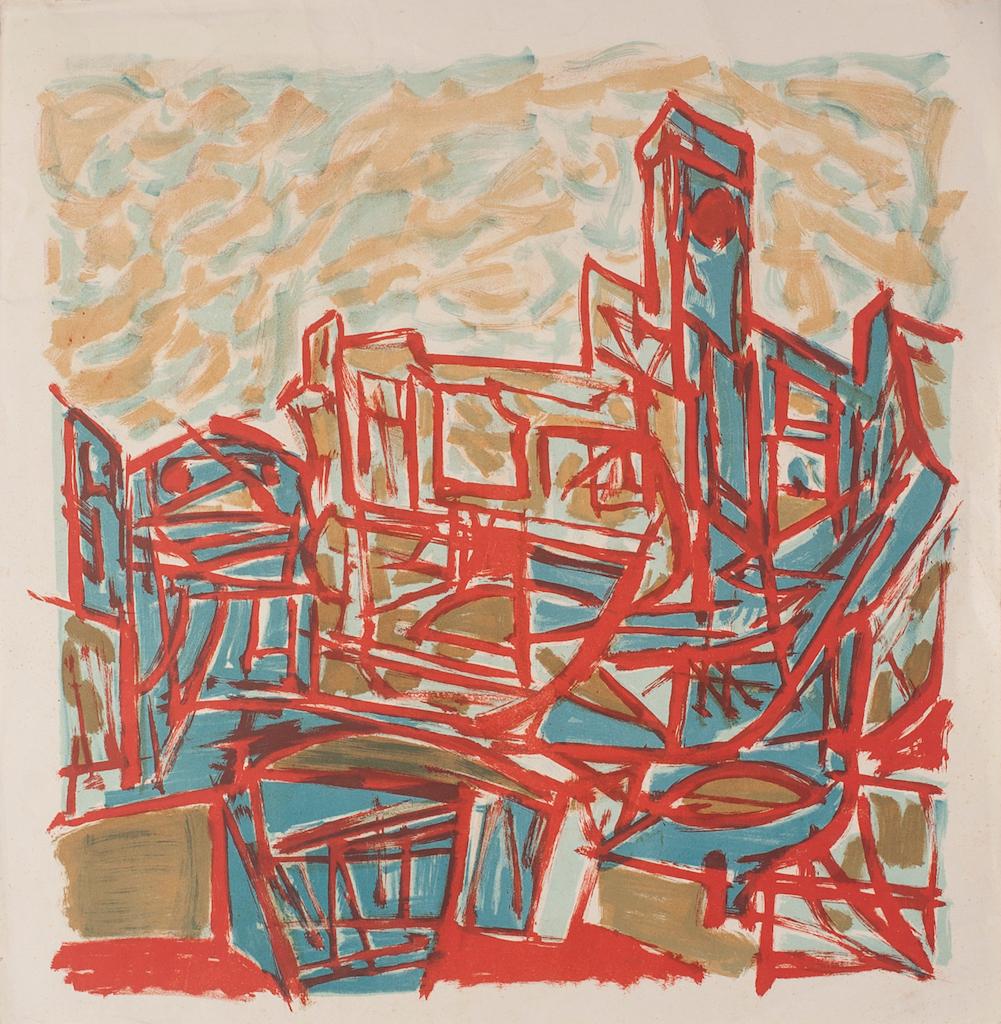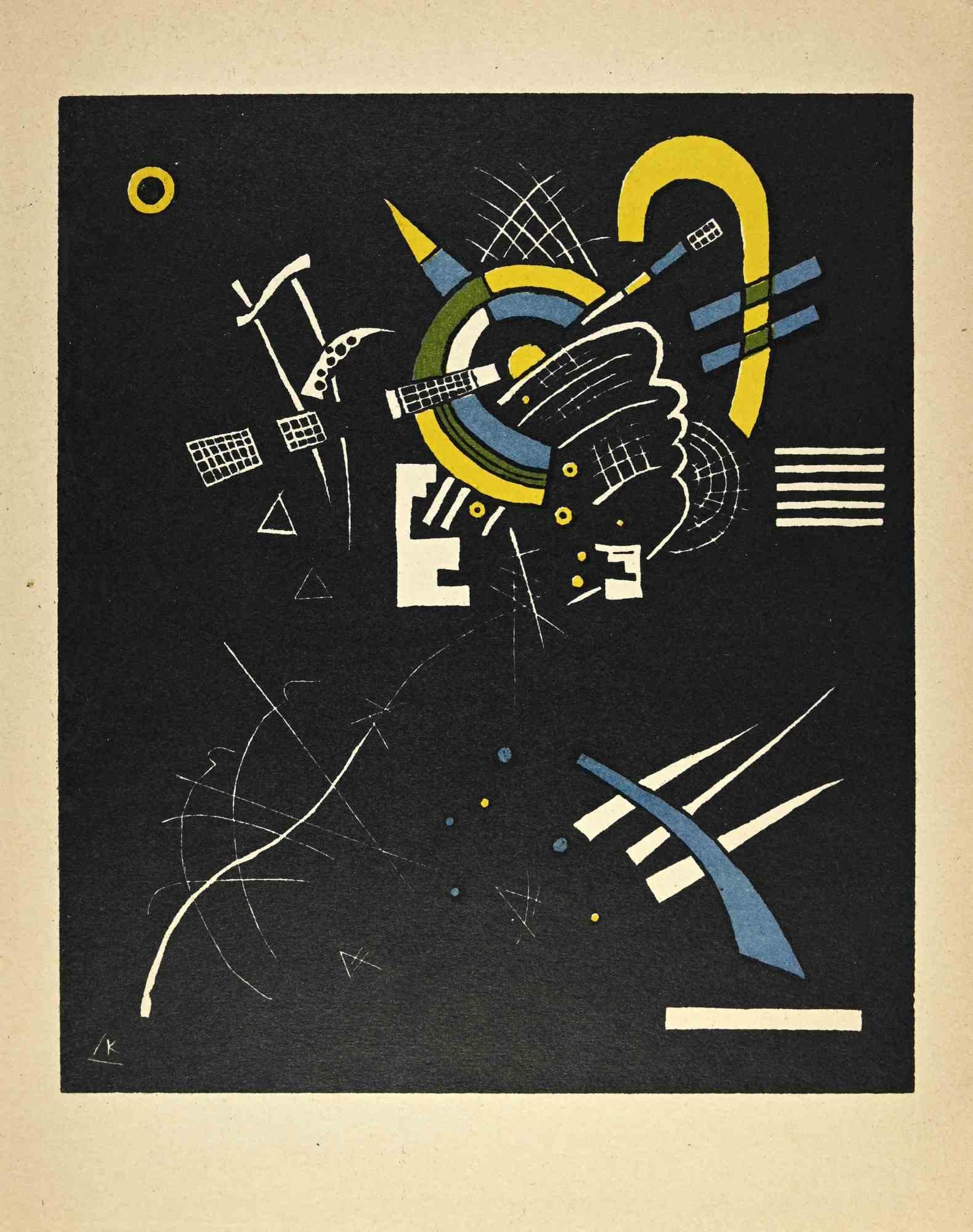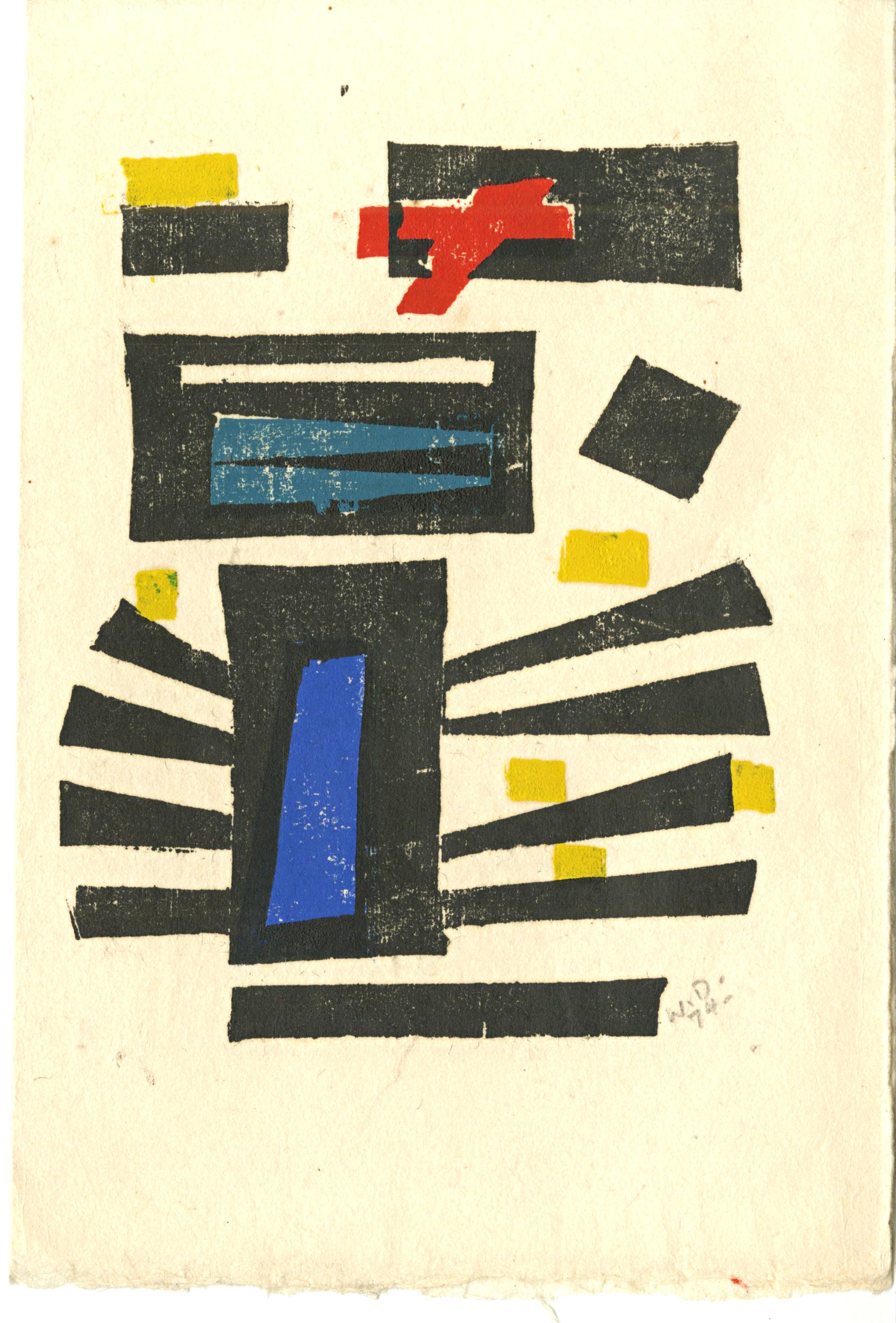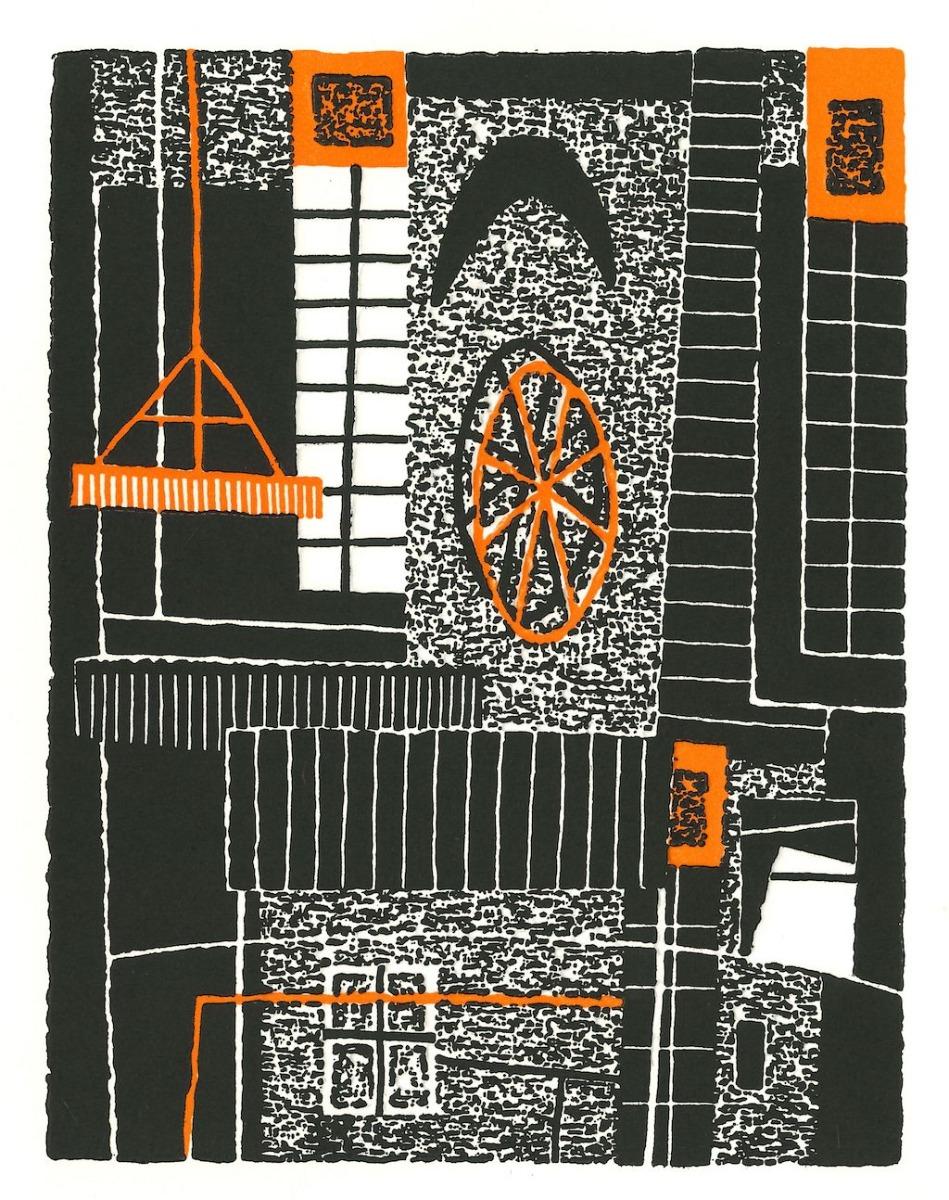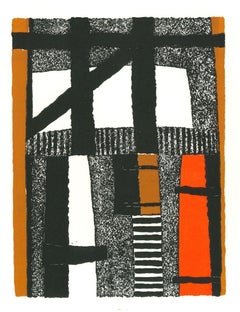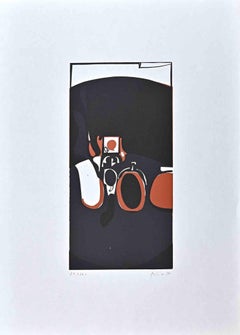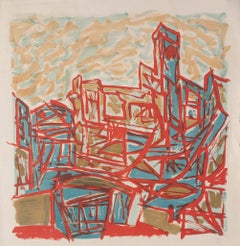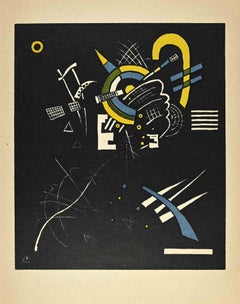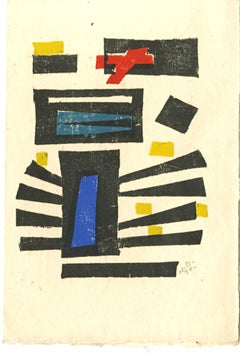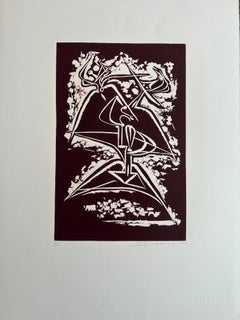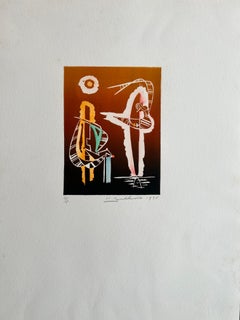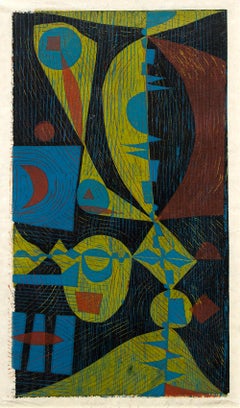Items Similar to Composition - Woodcut Print - Mid-20th Century
Want more images or videos?
Request additional images or videos from the seller
1 of 2
UnknownComposition - Woodcut Print - Mid-20th CenturyMid-20th Century
Mid-20th Century
$352.50
£269.93
€300
CA$495.44
A$543.47
CHF 284.35
MX$6,468.38
NOK 3,591.54
SEK 3,368.93
DKK 2,285.38
About the Item
Composition is a woodcut print realized by an unknown artist in the mid-20th Century.
Good conditions, but abrasions on top and lower margins.
Illegible signature, and some spots on the back.
Image Dimensions: 17.5 x 14.5 cm
- Creation Year:Mid-20th Century
- Dimensions:Height: 9.06 in (23 cm)Width: 7.68 in (19.5 cm)Depth: 0.04 in (1 mm)
- Medium:
- Movement & Style:
- Period:
- Framing:Framing Options Available
- Condition:Insurance may be requested by customers as additional service, contact us for more information.
- Gallery Location:Roma, IT
- Reference Number:Seller: M-1190851stDibs: LU65038049572
About the Seller
4.9
Platinum Seller
Premium sellers with a 4.7+ rating and 24-hour response times
1stDibs seller since 2017
7,815 sales on 1stDibs
Typical response time: 1 hour
- ShippingRetrieving quote...Shipping from: Monaco, Monaco
- Return Policy
More From This Seller
View AllComposition - Woodcut by Luigi Spacal - 1970s
Located in Roma, IT
Composition is a contemporary artwork realized by Luigi Spacal (Trieste, 1907 - Trieste, 2000) in the 1970s.
Original Colored woodcut print on cardboard. Image Dimensions: 18 x 14 cm
Good conditions.
Lojze Spacal...
Category
1970s Abstract Abstract Prints
Materials
Woodcut
Abstract Composition - Woodcut - 1950s
Located in Roma, IT
Abstract Composition is a woodcut print on paper realized by an Anonymous artist in the 1950s.
Hand-signed, illegible, and numbered, edition of 50/100 prints.
Good conditions.
The...
Category
1950s Surrealist Abstract Prints
Materials
Woodcut
Composition - Original Lithograph on Paper - Mid-20th Century
Located in Roma, IT
Composition is an original lithograph artwork realized in the mid-20th Century.
Good conditions.
Composition is an interesting artwork that depicts an abstract cityscape through h...
Category
Mid-20th Century Contemporary Abstract Prints
Materials
Lithograph
Composition - Woodcut after Vasilij Kandinskij - mid-20th century
Located in Roma, IT
Composition is a woodcut print realized in the mid-20th Century after Wassily Kandinsky (1886-1944).
Good condition on a white cardboard.
Monogrammed by the artist on the lower lef...
Category
Mid-20th Century Abstract Abstract Prints
Materials
Etching, Aquatint
Composition - Original Woodcut by Luigi Spacal - 1970s
Located in Roma, IT
Composition is an original contemporary artwork realized by Luigi Spacal (Trieste, 1907 - Trieste, 2000) in the 1970s.
Original Colored woodcut on cardboard.
Good conditions. Image Dimensions: 14 x 12.5 cm
Lojze Spacal, also known as Luigi Spacal, was born on the Trieste Karst, at the time of the Austro-Hungarian Empire, from a family of Slovenian nationality.In 1930 he was arrested on charges of anti-fascism and confined for some time to Accettura, in Basilicata. Here he discovered his artistic vocation. In 1934 he graduated in Venice. He began to exhibit his first works in 1937. In 1942 he was again sent to confinement, this time in Abruzzo and, later, assigned to a special working battalion in Forte dei Marmi. Nevertheless, he managed to continue to exhibit his works so much that, in 1944, he set up his first solo show. In 1948 he participated for the first time in the Venice biennial. In 1958 he won the International Grand Prix "for a draftsman and engraver" at the Venice Biennale. In 1959 he received the 2nd prize at the International Biennial of Graphic Art in Ljubljana. In 1974 he was awarded the Prešeren prize, the highest Slovenian artistic recognition, and the “San Giusto d'Oro” in 1977. In 1998 a museum was dedicated to him in the castle of San Daniele...
Category
1970s Abstract Abstract Prints
Materials
Woodcut
Composition - Original Woodcut by Luigi Spacal - 1970s
Located in Roma, IT
Composition is an original contemporary artwork realized by Luigi Spacal (Trieste, 1907 - Trieste, 2000) in the 1970s.
Original Colored woodcut print on cardboard.
Good conditions. Image Dimensions: 14 x 12.5 cm
Lojze Spacal, also known as Luigi Spacal, was born on the Trieste Karst, at the time of the Austro-Hungarian Empire, from a family of Slovenian nationality.In 1930 he was arrested on charges of anti-fascism and confined for some time to Accettura, in Basilicata. Here he discovered his artistic vocation. In 1934 he graduated in Venice. He began to exhibit his first works in 1937. In 1942 he was again sent to confinement, this time in Abruzzo and, later, assigned to a special working battalion in Forte dei Marmi. Nevertheless, he managed to continue to exhibit his works so much that, in 1944, he set up his first solo show. In 1948 he participated for the first time in the Venice biennial. In 1958 he won the International Grand Prix "for a draftsman and engraver" at the Venice Biennale. In 1959 he received the 2nd prize at the International Biennial of Graphic Art in Ljubljana. In 1974 he was awarded the Prešeren prize, the highest Slovenian artistic recognition, and the “San Giusto d'Oro” in 1977. In 1998 a museum was dedicated to him in the castle of San Daniele...
Category
1970s Abstract Abstract Prints
Materials
Woodcut
You May Also Like
Untitled Mid Century Modern Abstract Woodcut
By Werner Drewes
Located in New York, NY
Werner Drewes
Untitled Mid Century Modern Abstract Woodcut, 1974
Woodcut fold-out card on Rives BFK paper with deckled edges
9 1/5 × 6 1/4 inches
Unframed
Rarely seen, this twice sig...
Category
Mid-20th Century Abstract Abstract Prints
Materials
Woodcut
Untitled 1973 abstract lithograph by Hans Burkhardt
By Hans Burkhardt
Located in Hudson, NY
Abstract 1973 abstract lithograph by Hans Burkhardt. Image is 12" x 7 7/8 and sheet size is 20 3/4" x 14 3/4", edition is 3/12. Signed with both the artist's signature and date (H. ...
Category
1970s Abstract Abstract Prints
Materials
Paper, Lithograph
Untitled lithograph by Hans Burkhardt
By Hans Burkhardt
Located in Hudson, NY
Abstract lithograph by Hans Burkhardt. Image is 7 3/4" x 6" and sheet size is 21" x 14 1/4". The edition is 3/5. Marked with both the artist's signature and date (H. Burkhardt 1975,...
Category
1970s Abstract Abstract Prints
Materials
Paper, Lithograph
Mid-Century Modern Abstract Woodcut Print, Geometric Fine Art in Color
By Edward Marecak
Located in Denver, CO
This original mid-century modern woodcut print on linen, titled "Shapes", is by renowned American artist Edward Marecak (1919–1993). A striking example of his abstract work, this pie...
Category
20th Century Abstract Geometric Abstract Prints
Materials
Woodcut
Jean Miotte - Abstract Composition - Original Aquatint Engraving
By Jean Miotte
Located in Collonge Bellerive, Geneve, CH
Jean Miotte - Rare Original Aquatint Engraving
Title: Abstract Composition
Dimensions: 76 x 56 cm
Jean Miotte, 1926 - 2016
Miotte came of artistic age in the decade after World War...
Category
1970s Abstract Expressionist Abstract Prints
Materials
Aquatint
Pietro Consagra Italian Mod Abstract Expressionist Forma Brutalist Lithograph
By Pietro Consagra
Located in Surfside, FL
Pietro Consagra (Italian, 1920-2005).
Hand signed in pencil and numbered limited edition color lithograph on Magnani paper.
Embossed stamp with limited edition numbers in pencil to lower left, and having artist pencil signature to lower right.
(from a limited edition of 80 with 15 artist's proofs)
Published by Stamperia 2RC, Rome Italy and Marlborough Gallery, Rome, Italy.
Abstract Modernist work in colors, produced in the style of the Forma art movement of Postwar Italy, of which the artist was a prominent member.
Pietro Consagra (1920 – 2005) was an Italian Post war artist working in painting, printmaking and sculpture. In 1947 he was among the founding members of the Forma 1 group of artists, proponents of structured abstraction.
Consagra was born on 6 October 1920 in Mazara del Vallo, in the province of Trapani in south-western Sicily, to Luigi Consagra and Maria Lentini. From 1931 he enrolled in a trade school for sailors, studying first to become a mechanic, and later to become a captain. In 1938 he moved to Palermo, where he enrolled in the liceo artistico; despite an attack of tuberculosis, he graduated in 1941, and in the same year signed up at the Accademia di Belle Arti, where he studied sculpture under Archimede Campini. After the Invasion of Sicily and the Allied occupation of Palermo in 1943, Consagra found work as a caricaturist for the American Red Cross club of the city; he also joined the Italian Communist Party. Early in 1944, armed with a letter of introduction from an American officer, he travelled to Rome. There he came into contact with the Sicilian artist Concetto Maugeri, and through him with Renato Guttuso, who was also Sicilian and who introduced him to the intellectual life of the city and to other postwar artists such as Leoncillo Leonardi, Mario Mafai and Giulio Turcato. Consagra signed up at the Accademia di Belle Arti di Roma in September 1944 and studied sculpture there under Michele Guerrisi, but left before completing his diploma.
In 1947, with Carla Accardi, Ugo Attardi, Piero Dorazio, Mino Guerrini, Achille Perilli, Antonio Sanfilippo and Giulio Turcato, Consagra started the artist's group Forma 1, which advocated both Marxism and structured abstraction.
Steadily Consagra's work began to find an audience. Working primarily in metal, and later in marble and wood, his thin, roughly carved reliefs, began to be collected by Peggy Guggenheim and other important patrons of the arts. He showed at the Venice Biennale eleven times between 1950 and 1993, and in 1960 won the sculpture prize at the exhibition. During the 1960s he was associated with the Continuità group, an offshoot of Forma I, and in 1967 taught at the School of Arts in Minneapolis. Large commissions allowed him to begin working on a more monumental scale, and works of his were installed in the courtyard of the Foreign Ministry in Rome and in the European Parliament, Strasbourg. His work is found in the collections of The Tate Gallery, London, in Museo Cantonale d'Arte of Lugano and the Museum of Modern Art, Paris, and the National Gallery of Art in Washington, D.C..
Consagra returned to Sicily where he sculpted a number of significant works during the 1980s. With Senator Ludovico Corrao, he helped created an open-air museum in the new town of Gibellina, after the older town had been destroyed in the earthquake of 1968. Consagra designed the gates to the town's entrance, the building named "Meeting" and the gates to the cemetery, where he was later buried.
In 1952 Consagra published La necessità della scultura ("the need for sculpture"), a response to the essay La scultura lingua morta ("sculpture, a dead language"), published in 1945 by Arturo Martini. Other works include L'agguato c'è ("the snare exists", 1960), and La città frontale ("the frontal city", 1969). His autobiography, Vita Mia, was published by Feltrinelli in 1980. In 1989 a substantial retrospective exhibition of work by Consagra was shown at the Galleria Nazionale d'Arte Moderna in Rome; in 1993 a permanent exhibition of his work was installed there. In 1991 his work was shown in the Hermitage Museum in St. Petersburg. In 2002 the Galerie der Stadt Stuttgart opened a permanent exhibition of his work. He was one of ten artists invited by Giovanni Carandente, along with David Smith, Alexander Calder, Arnaldo Pomodoro, Lynn Chadwick, and Beverly Pepper, to fabricate works in Italsider factories in Italy for an outdoor exhibition, "Sculture nella città", held in Spoleto during the summer of 1962. He was included in the The 1962 International Prize for Sculpture the jury included Argan, Romero Brest and James Johnson Sweeney the former director of the Solomon R. Guggenheim Museum in New York. The participants included Louise Nevelson and John Chamberlain for the United States; Lygia Clark for Brazil; Pietro Consagra, Lucio Fontana, Nino Franchina, and Gió Pomodoro for Italy; Pablo Serrano for Spain; and Eduardo Paolozzi, William Turnbull, and Kenneth Armitage for England. Gyula Kosice, Noemí Gerstein, Julio Gero, Naum Knop...
Category
1960s Abstract Expressionist Abstract Prints
Materials
Lithograph
More Ways To Browse
Illegible Signature
Takashi Murakami For Blm
Takeshi Hara
Tal R Artist
Tikva Robert Indiana
Twombly Natural History
Unsigned Joan Miro Lithographs
Untitled 23 Agam
Victor Vasarely Chess
Vija Celmins Poster
Vintage Plakate Original
Vintage Posters Hundertwasser
War Is Over Yoko
Wong Shue
Yaacov Agam Night
Vintage Frame Gold Painting
Wim Van Der Kant
Yoga Sculptures

